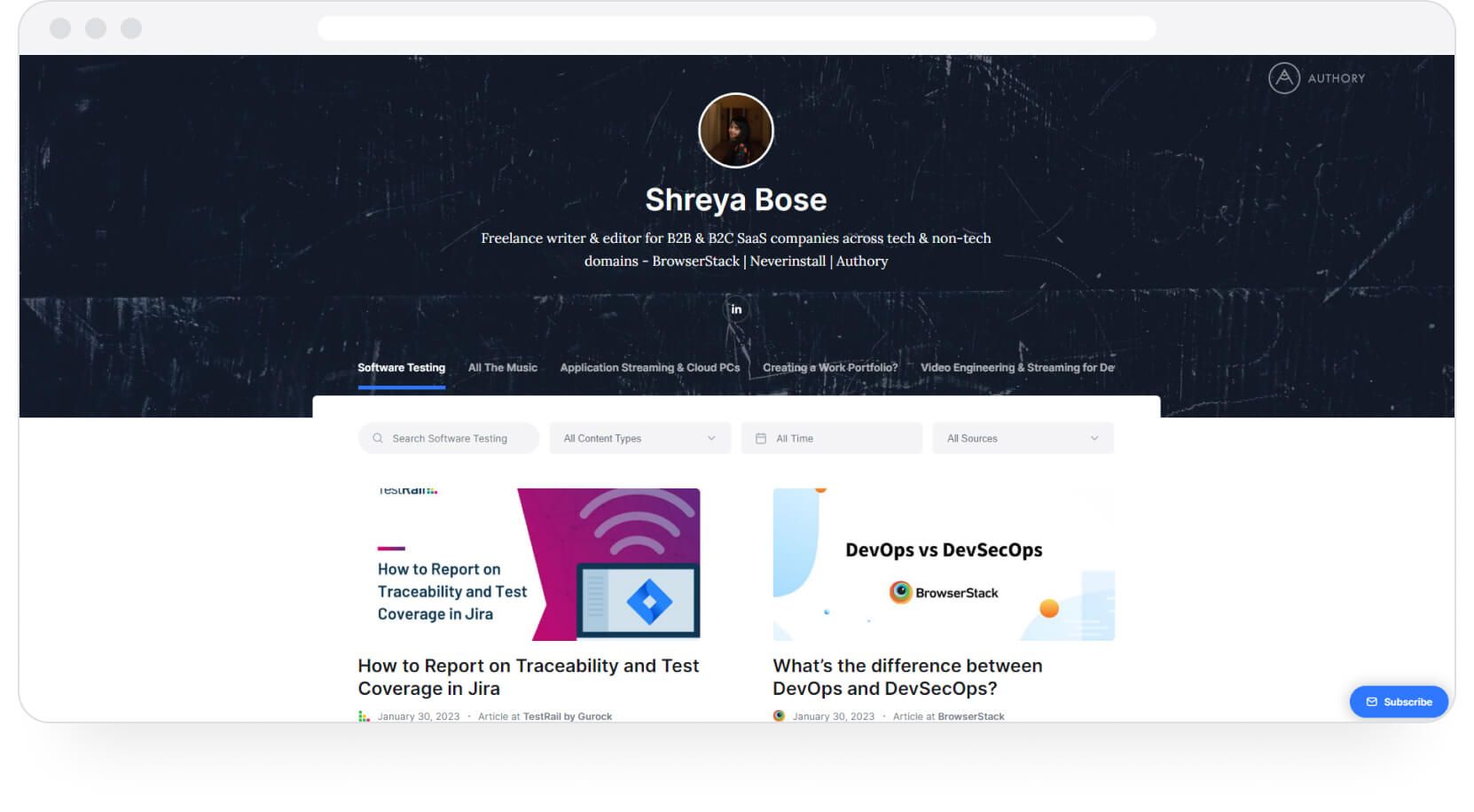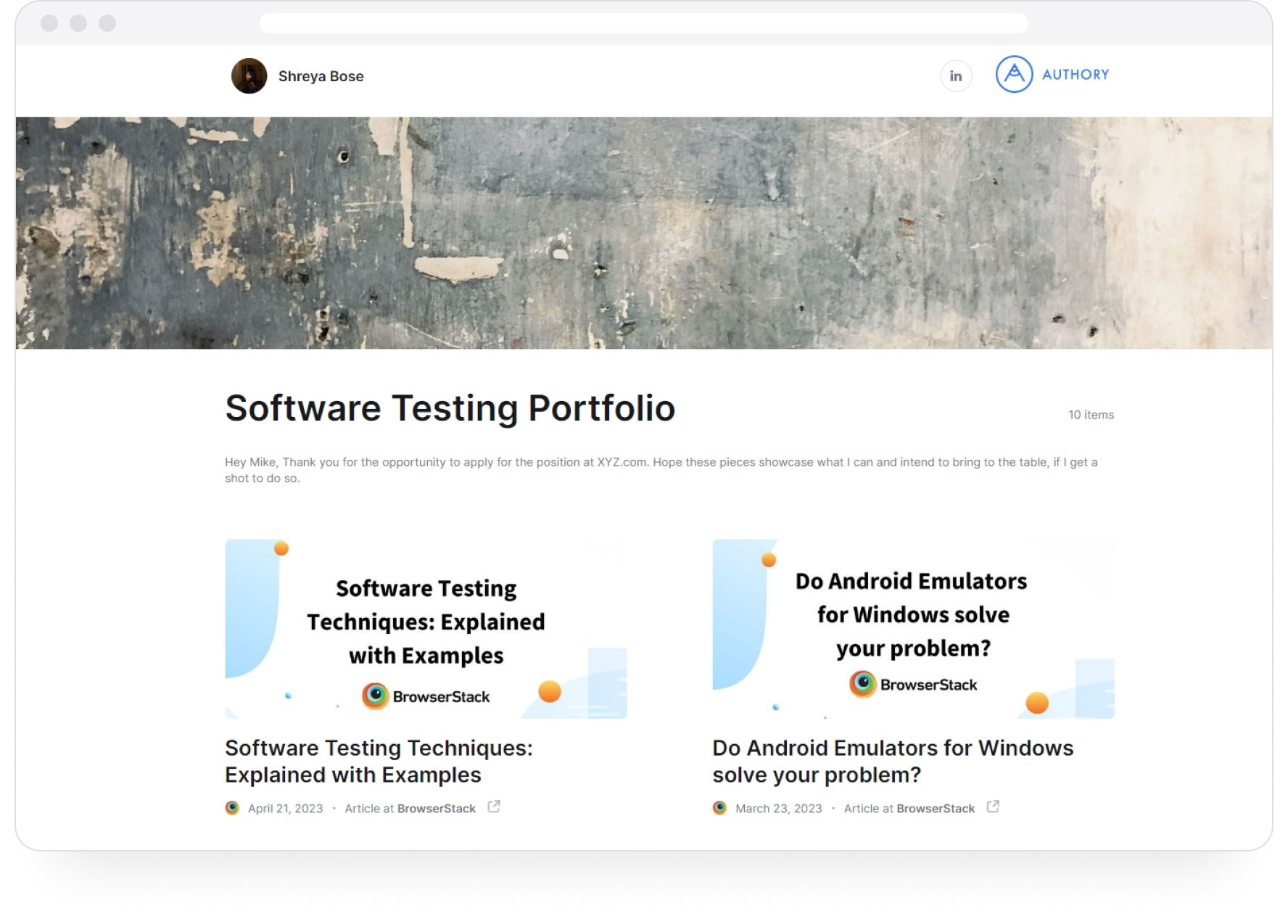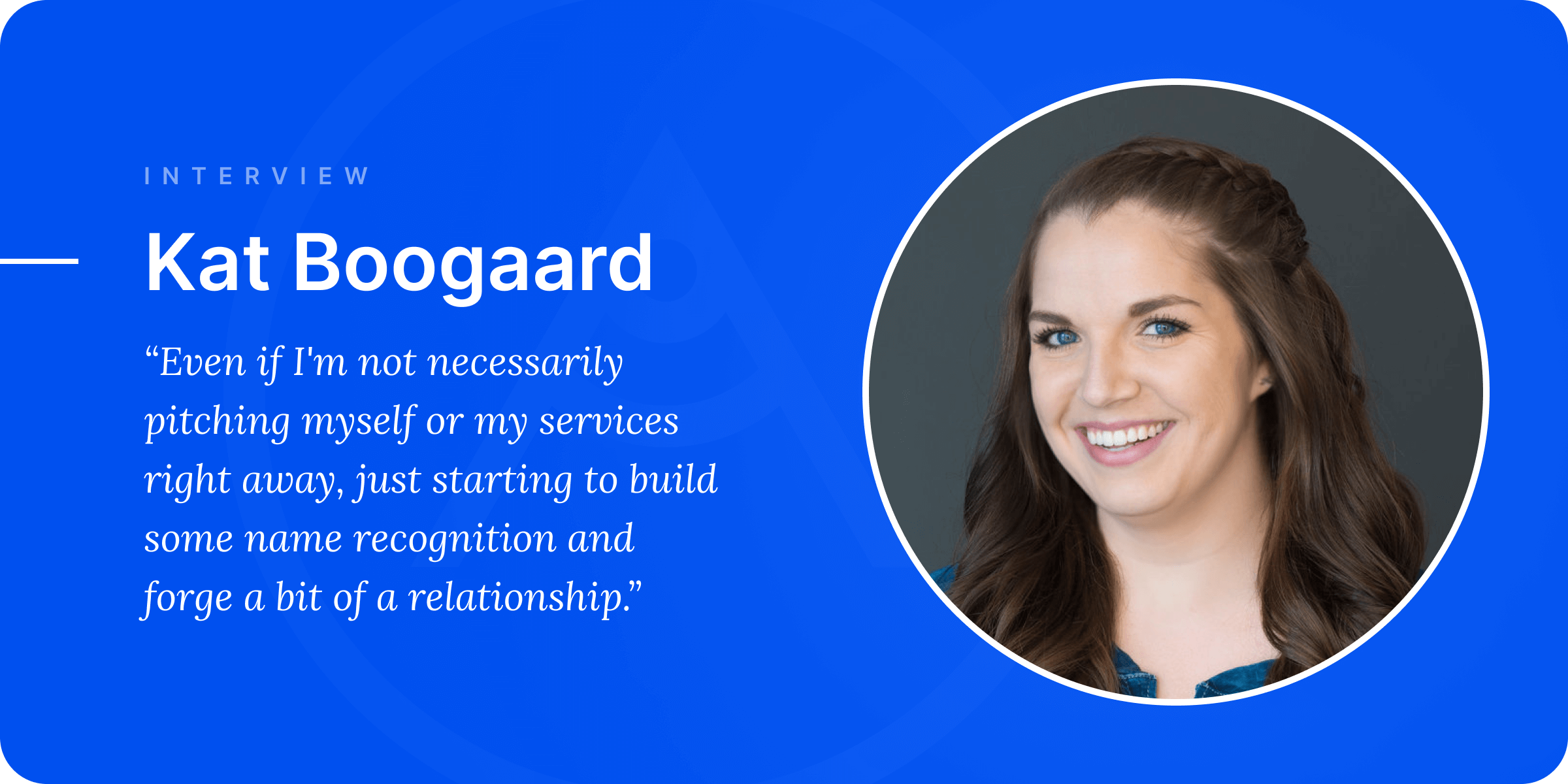Life is hard. Freelancing is hard.
As someone who shifted from full-time to freelance writing in 2020, it’s been interesting, confusing, rewarding, and yet, hard.
One has to keep looking for clients, keep meeting deadlines, keep filing taxes under different provisions, and keep their chin up through rejections (no, this is the hardest).
Thankfully, my editor knows the depths of my difficulties (including the fact that I am dramatic sometimes) and we realized that other freelancers are possibly suffering through the same issue as I am. Hence, we reached out to a seasoned industry professional, a veteran freelancer, and a mentor to other freelancers for help – Kat Boogaard.
Now, I do a lot of research and ask actual journalists, editors, and recruiters about the realities of their industry before putting pen to paper (or, you know… typing on a screen). But it’s always great when we can present insights directly from someone who has spent NINE years as not just a freelance writer, but also a mentor for other writers.
There’s more to freelancing than a stunning portfolio (which Authory can help you build in 3 minutes). That “more” should come from someone whose literal job it is to help freelancers amp up their career, or navigate it with mental health and profits intact.
We did find someone like that – Kat Boogaard, and here’s why you should listen to her.
• Why is Kat Boogaard & why you should listen to her about freelancing
• Kat’s tips for freelancers in 2024 (based on how she operates her business and work)
• How Kat uses Authory
Who is Kat Boogaard (and why should you take a tip from her)?
Not only is Kat a seasoned freelance writer with bylines in Forbes, Fast Company, TIME, Inc., Business Insider, The Muse, Trello, Mashable, and more… she also brings her considerable industry experience to teaching. She helps both new and established freelancers level up their businesses, find better clients, work more efficiently, and avoid burnout.
She does it for her living, and with many happy clients, it’s safe to assume she knows what she is doing.
In her own words, “I am a full-time freelance writer for a little over nine years. So it's been a journey.”
If you’re curious about Kat’s own portfolio, check it out at authory.com/KatBoogaard

You can also have a quick look at her website: katboogaard.com before we get started with the good stuff.

Tips for Freelancers In 2024
Do your own marketing on social media
To quote Kat, “I'm very active on Twitter and LinkedIn, just as part of running my business. Taking note of clients and companies that are in my niche, looking at their LinkedIn page, finding the Content Manager, sending a LinkedIn request with a personalized note. Even if I'm not necessarily pitching myself or my services right away, just starting to build some name recognition and forge a bit of a relationship.”
The big difference in Kat’s approach is that she doesn’t just post on social media. She’s not just talking about her own achievements or giving generalized tips for freelancers. She interacts and engages with prospective clients. She sends personalized messages, engages with their online conversations, and takes an active interest in understanding the individual and their professional priorities and concerns.
If you, fellow freelancer, are looking for new clients, this is the way to go.
Kat’s strategy is recommended by other industry veterans. Here’s a bonus tip from Anthony Sills, Founder & Content Strategist at Professional Pen:
“I’ve found clients on Slack, in Facebook groups, and by participating in relevant Twitter chats. In addition to creating content to share on social media, find people you can help by searching for “looking for freelance X” (with “X” being whatever it is you do: i.e. photographer, designer, etc.).”
If you’re a freelancer, you always have to look out for it in some way, at least. Unless you have regular work coming in that meets all your expenses and lets you save (you are so lucky!), you’ll have to do some digital legwork and find new opportunities.
Thankfully, there are plenty of freelance openings these days, given that outsourcing work, especially writing, is more common than ever. So, be somewhat meticulous about posting your insights and work samples on social media.
Reach out to industry leaders, recruiters, content managers, and other relevant individuals in your chosen industries. Even if they don’t have anything at hand, consider relationship building with the right people as important as actually doing the freelance assignments you get.
Use targeted pitches to get new clients
Go along with me for a second.
You’re a freelance writer, and your pieces cover news, opinions, & analyses on multiple topics — the ethics of AI, the secrets of barbecuing, all things coffee, and financial advice for people in their first jobs.
Now, let’s say you’re pitching to a new client who runs an AI-based product. They want someone to write about how they are implementing AI mechanics without breaching ethical standards.
This is right in your wheelhouse, so you send them your portfolio comprising your life’s work — everything from AI to financial advice — your prospective client will have to pick out and read your articles on AI ethicality.
This works, but what if you could send them a portfolio with ONLY your AI pieces? Wouldn’t that improve the chances of securing the gig?
That is exactly what Kat does, using Authory’s Collections feature.
I’ll discuss more on this at the end of the article, but basically, ****Authory Collections lets you send a personalized portfolio with only the work samples directly related to the client. They don’t have to search for relevant keywords or topic sentences. Everything on the portfolio is tailored to their niche, so they know the exact depth and expanse of your knowledge and skills.
Now, the entirety of this feature would make this article over 3000 words long, and my editor would disown me. So, if you are curious, take a look at this video:
Or this article with a step-by-step tutorial on the feature: How to personalize your portfolio for each prospective client
Stay organized
If you’re dealing with more than three clients, you need to get organizing your projects, invoices, work timings, and breaks. Yes, you should absolutely schedule breaks.
For this purpose, you need certain tools to keep you honest. Here’s what Kat uses in her tech stack:
“Google Docs all day, every day haunts my dreams — I will never get away from it. And I use Trello. A lot. I don't just say that because I've written for Trello for many years, but I love having a Trello board to track. Like my own personal ideas for blog content I might want to do for other freelancers. But I also have a whole Trello board where I keep track of leads.”
So, Kat uses GDocs, GMail, Zoom, and Trello, along with Authory, to keep her professional life on track.
Five tools may seem like a lot, but not when you see it as devoting a single tool to a single purpose. I use Authory, GDocs, Notion, Gmail, and Zoom — for portfolio, writing/editing, project management, emails for communication, and video meetings.
Narrow down the functions you really need, and find one tool that corresponds to each. If you can find a tool that allows multiple functions (like Authory does), you’ve hit gold.
For example, not only does Authory import all your bylined work, back it up forever, and let you build a portfolio with a few clicks, but it also gives you an email notification every single time a new bylined piece is published on one of your client’s websites.
Quick thoughts on ChatGPT & Threads
It would be remiss for us to talk about freelancing in 2024 and not mention AI, ChatGPT, and Twitter’s evolution into X. As writers, freelancers, and content marketers, we’re all wondering how we need to grow in our careers to stay valuable.
The good news is that many of our fears about an AI-powered future are speculative. The day-to-day hasn’t changed all that much yet.
I’ll start with Kat’s words because she is someone actually dealing with this ostensible threat to her livelihood – as are most of us writers out there.
“… people have seen the headlines about AI, but it's not in the forefront of their minds, in their careers as it is for people like us who are in this day in and day out. So I try to keep that in mind, too. It can become a little bit of an echo chamber of sorts, because we're all fearing the same things. So we're saying the same things. And we're adding fuel to the fire in that regard.”
Her thoughts on X (formerly Twitter) also merit some focus.
“It's definitely changed. It's like, a lot more bots, a lot more junk, a lot more irrelevant stuff in your feed. But I have a decent-sized audience there. And a lot of people that I like to interact with I pretty much only interact with there. So I haven't been able to leave.
Also, everybody was all about Threads for all of two hours, but now I feel like I never hear anything about it.”
The message here? Don’t panic. AI editors will certainly disrupt traditional (so far) workflows, but actual professionals will tell you that you still have time to figure out workarounds. Additionally, AI writing isn’t all it’s hyped to be… not yet, anyway.
“The intended tone of an article and the misuse of statistics within the flow of the content are just two of the quality concerns that can be experienced with AI writing tools. Many AI tools scrape pieces of content from other websites and then re-word them, which is against Google's guidelines of ‘stitching or combining content from different web pages without adding sufficient value.’” — James Hare, SEO manager of Bliss Search Agency.
And he’s not the only one.
“AI content feels so much like what I defined as Mirage Content 7 years ago: when you first read it, it sounds really articulate and well-written, but when you stop to really dissect the arguments, you realize it’s just stating the same generic arguments in different ways.
So, as a content marketing tool, AI is effectively just making it easier to produce mirage content at scale. Many companies and agencies are taking the same flawed approach they used before to produce content and are now doing it faster with technology.” — Benji Hyam, Co-Founder of Grow and Convert.
There’s also Mikhail Tuknov, a Digital Marketing Consultant, who says,
“While AI may be able to generate basic content, there will still be a demand for skilled copywriters who can craft engaging, persuasive, and emotionally resonant copy.
Copywriters with expertise in specific niches or industries will be more valuable as they can provide insights and knowledge that AI tools may not be able to replicate fully.”
And finally,
“Right now, AI copywriting is ahead of human copywriters only in one respect: speed. At lightning speed or faster, it can produce text the way you want it. But, the demands of copywriting vary from job to job and various other factors.
Besides, copywriting isn’t a machine-led job; instead, it is creative and calls for language fluency. Can a bot mimic this and come up with a highly creative and unique copy? We don’t think so.”, says Team Pepper.
How Kat uses Authory
Since this is an article on the Authory blog, I’ll take a minute to deep-dive into three particular features of the tool that stand out for Kat and help her significantly in running her business.
Why Kat uses both Authory and WordPress
Many of Authory’s users (including myself) use a single Authory portfolio for all client interactions. I, for example, don’t have a personal website because I simply do not need it. Clients can contact me through the info placed in my Authory portfolio, and I’m not really running a business, so that’s all I need.
Kat, however, uses an Authory portfolio as well as a personal website she built on WordPress. This is primarily because she has two sets of clients: ones she writes for, and freelancers she mentors with her experience.
“I have a portfolio on my website. But I have this whole other kind of side to my business, so to speak, that's providing advice and resources to fellow freelancers. So, I have a weekly newsletter, and a blog, and a shop and all these things.
And I would say my website is almost more geared toward a freelance audience than a client audience.”
This is an interesting approach and one to keep in mind if you’re juggling multiple gigs with entirely different audiences. Create a tailored experience for each, and you have a much higher chance of engaging them meaningfully (and of them picking your services).
How & Why Kat uses Authory’s Collections feature
“If I'm talking to a client that's in the employee engagement space, then I want to be able to easily find my pieces that are more about the employee experience, and not those that are maybe about productivity or something. So I find that really helpful.” says Kat.
As I mentioned before, the Collections features lets you create personalized portfolios for specific clients. These Collections can be made entirely private, so let me use my own personalized portfolio to give a glimpse into what Kat does.
I write for multiple clients on multiple topics. Some of these are software testing, video engineering SDKs, building work portfolios, cloud PCs & computing, and indie music (primarily Indian, some global).
Now, let’s say that I’m pitching to a new client launching a new software testing product. They want someone to create regular, educational content for their blog, which is exactly what I’ve done for my previous clients in the domain.
Instead of sending my standard portfolio with articles created for all my clients, I send a personalized portfolio with articles solely related to software testing.
Here’s what my regular portfolio looks like:

And here’s a personalized portfolio for the specific client I just mentioned:

See the difference? Not only does this portfolio include articles solely related to software testing, but it also contains a personalized message for the client. You’re directly speaking to them with your portfolio.
How Kat uses Authory’s email notifications
Again, as I mentioned before, Authory will send you an email notification every time a new article of yours is published and imported into its database.
Here's how it works: you enter a digital source, i.e., the website where your content has been published. After that, Authory takes up to 48 hours (usually less) to import every single bylined piece published on the digital source you've entered. In other words, the tool collates all your published content in one place. Authory also tracks all your future publications on each source website you previously input.
Now, you’ll get email notifications every time a new content piece is published.
“A super simple, but super underrated feature (of Authory) is getting an email every time a new content item is added. Because I often have the issue where clients are not great about letting you know when something goes live.
I've worked with subject matter experts who I want to notify when the piece is ready, so they can share it on LinkedIn expand its reach. But I can't do that if I didn't know that the piece is actually published.
And I've tried numerous things before such as spreadsheets or Trello boards to try to track. But I can't be checking 18 websites a day to see if articles of mine have gone live.” says Kat.
Moreover, you get these notifications from Authory faster than you would if you used Google Alerts.
And, that’s it. The most relevant tips for freelancing in 2024, are from someone whose job it is to help freelancers get better at their job and see more success. There’s not much else I can add to this conclusion, other than encouraging you to try Authory’s 14-day trial. The tool is an absolute game-changer, which is something I believe you will see for yourself once you start using it.



